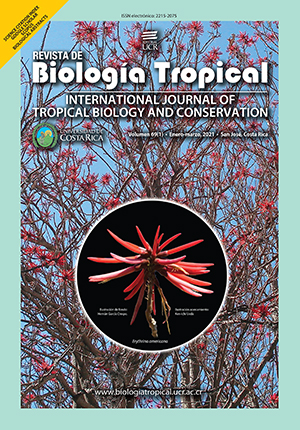Abstract
Introduction: Biological invasions are a major threat to biodiversity and ecosystems, with current and potential impacts on public health and conservation. Procambarus clarkii is a decapod crustacean, native to the Southern United States and Northeastern Mexico, which may adapt to different environmental conditions due to its ecological plasticity. Objective: The existing fundamental ecological niche of Procambarus clarkii was characterized in order to predict areas with environmental suitability for the potential establishment of the species in South America and Colombia. Methods: We used models of calibrated ecological niches in the native area, elaborated with the Maxent algorithm, based on occurrence data extracted from GBIF and hydroclimatic variables of aquatic ecosystems at a resolution of 1 km2. Results: The model indicated a wide geographic area for invasion potential in South America, predicting environmentally suitable areas for the presence and expansion towards Colombia, Venezuela, Peru, Ecuador, Brazil, Guyana, Surinam, Bolivia, Uruguay, Argentina, Paraguay and Chile. In Colombia, suitable areas predicted by the model are located mainly in the North and East of the country, spanning a diversity of ecosystems, such as tropical forests, basal forests, riparian forests and savannas. The species has a high possibility of expanding into low latitude distribution areas, occupying areas towards the Northern part of the Colombian Caribbean region, in the departments of Magdalena, Cesar, Cordoba and Atlántico. Suitability areas environmental were also predicted in Eastern Colombia, towards the extension of the Eastern plain of the Orinoquia, a low altitude region in Arauca, Casanare, Meta and Vichada. Conclusion: This study applies ecological niche models, which may be of interest in the planning of strategies or the creation of management plans, such as early warning systems that prevent the establishment of this species.
##plugins.facebook.comentarios##

This work is licensed under a Creative Commons Attribution 4.0 International License.
Copyright (c) 2021 Rosa F. Camacho-Portocarrero, Irene Duarte-Gándica, Mariano Altamiranda-Saavedra







